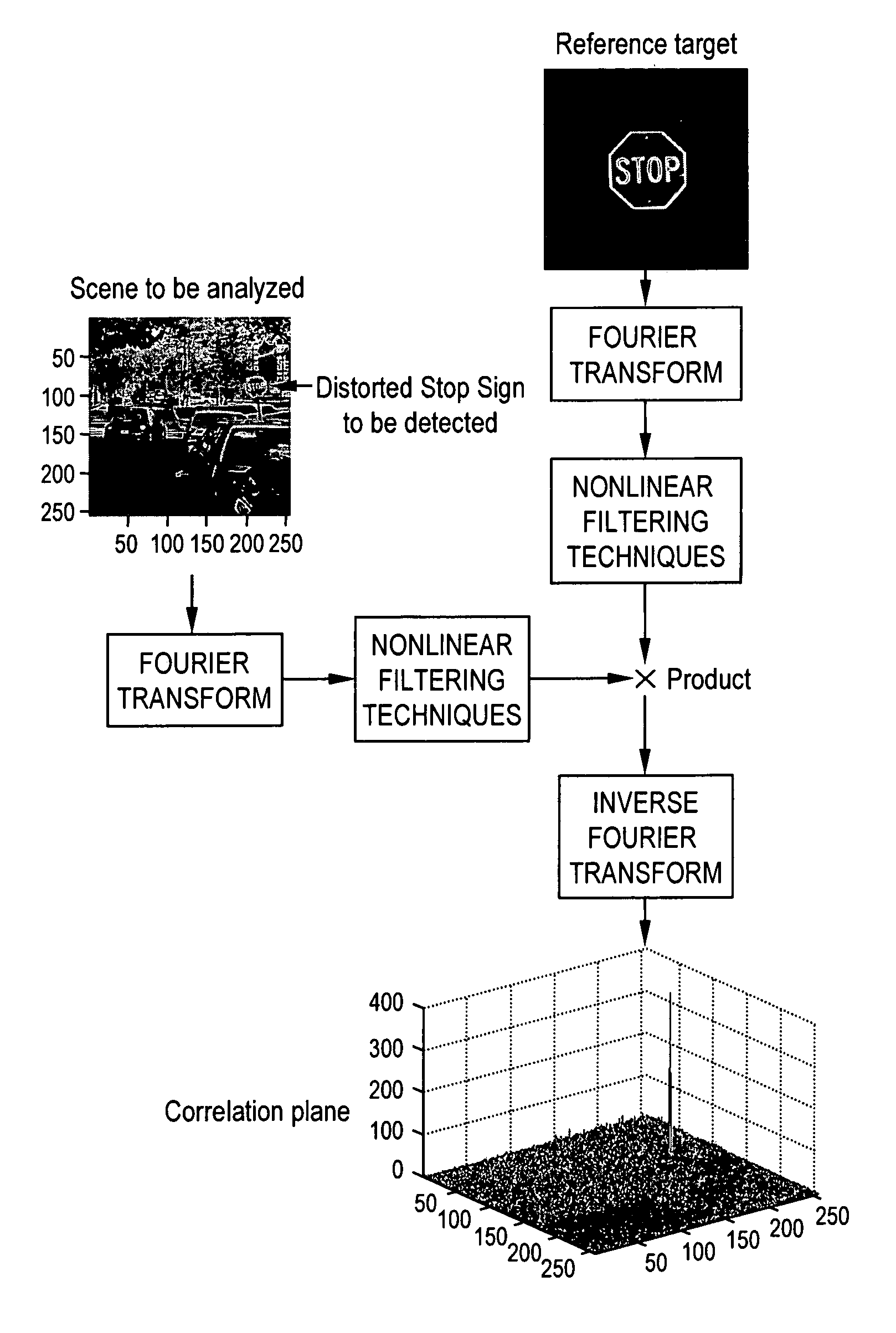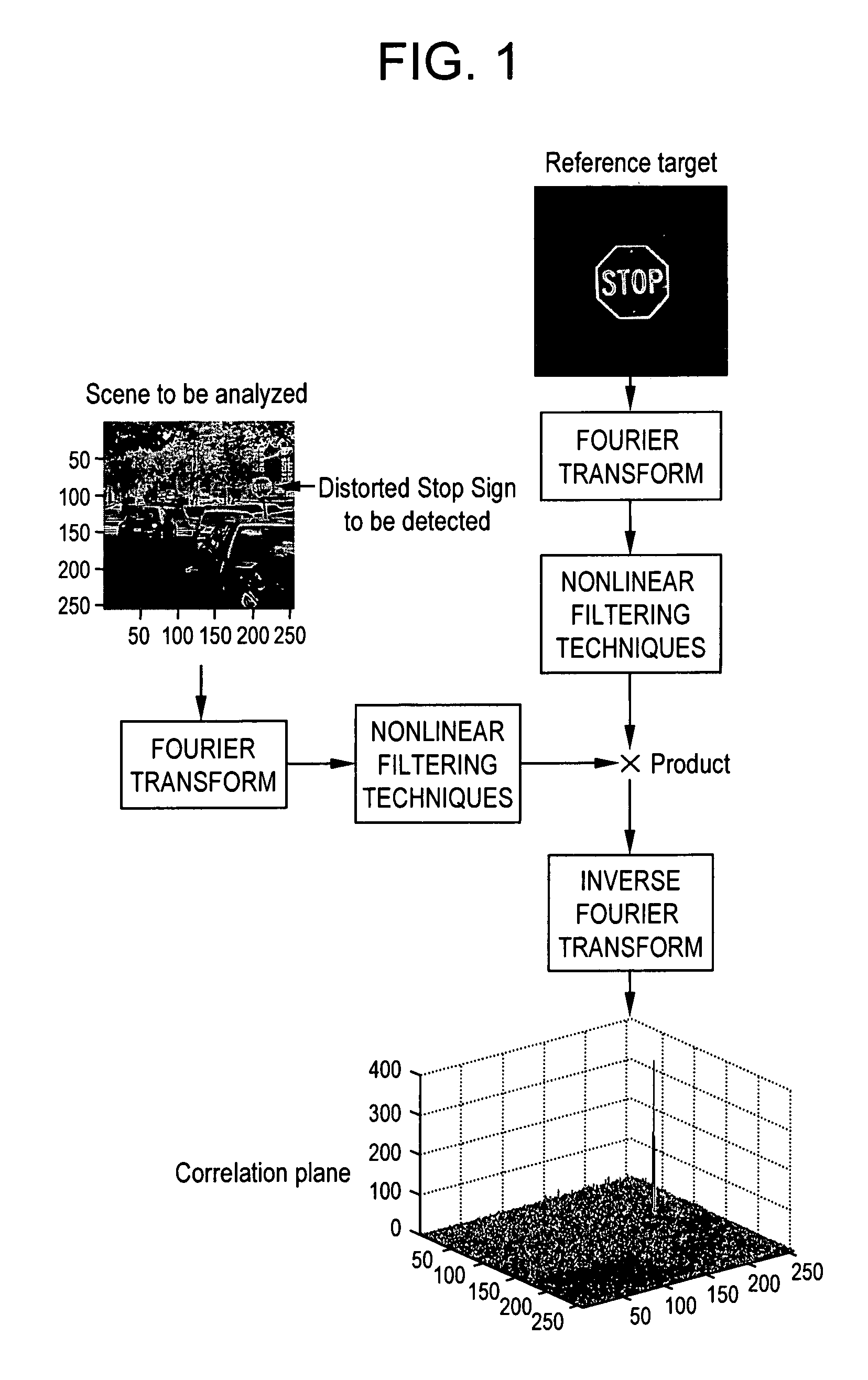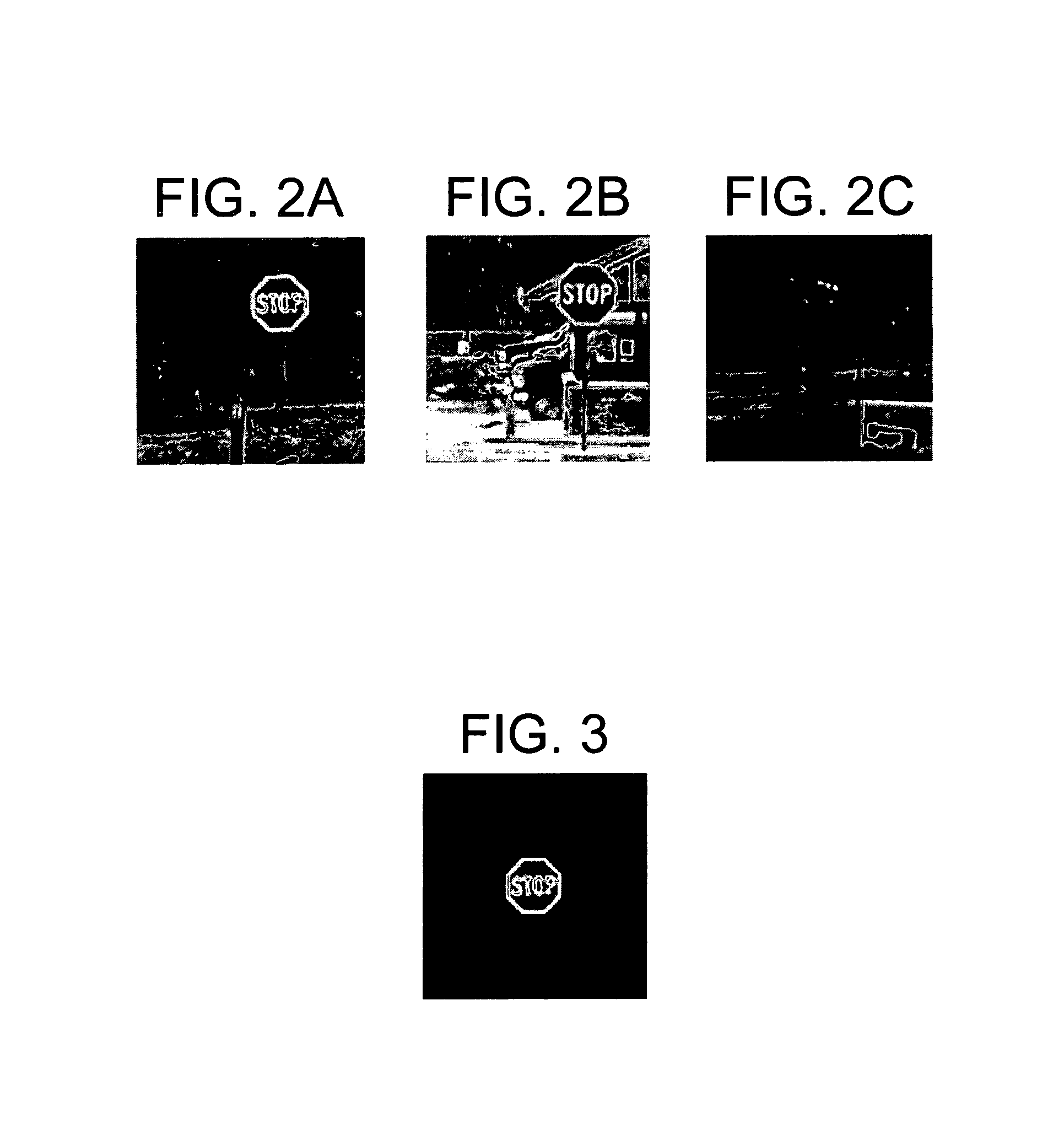Method and system for image processing for automatic road sign recognition
a road sign and image processing technology, applied in the field of pattern recognition, can solve the problems of significant collisions worldwide caused by missed or misunderstood road signs
- Summary
- Abstract
- Description
- Claims
- Application Information
AI Technical Summary
Benefits of technology
Problems solved by technology
Method used
Image
Examples
Embodiment Construction
[0041]Design of an on-board processor which enables recognition of a given road sign from a vehicle in motion is disclosed herein. A safety system to be installed in vehicles is based on this processor in order to automatically detect and identify road signs. Afterwards, the recognition system could make an objective decision according to the information detected. One of the greatest difficulties on achieving this goal lies on the number of different distortions that may simultaneously modify the reference sign. Variations in scale, in-plane and out-of-plane rotations, background clutter, partially occluded signs, variable illumination, are some examples of distortions that can affect road signs. To overcome these problems, a number of techniques have been studied in pattern recognition. Some of them have been applied to road sign recognition. For instance, an optical correlator for scale-invariant road sign detection has been proposed in the prior art. Recently, partial tolerance t...
PUM
 Login to View More
Login to View More Abstract
Description
Claims
Application Information
 Login to View More
Login to View More - R&D
- Intellectual Property
- Life Sciences
- Materials
- Tech Scout
- Unparalleled Data Quality
- Higher Quality Content
- 60% Fewer Hallucinations
Browse by: Latest US Patents, China's latest patents, Technical Efficacy Thesaurus, Application Domain, Technology Topic, Popular Technical Reports.
© 2025 PatSnap. All rights reserved.Legal|Privacy policy|Modern Slavery Act Transparency Statement|Sitemap|About US| Contact US: help@patsnap.com



